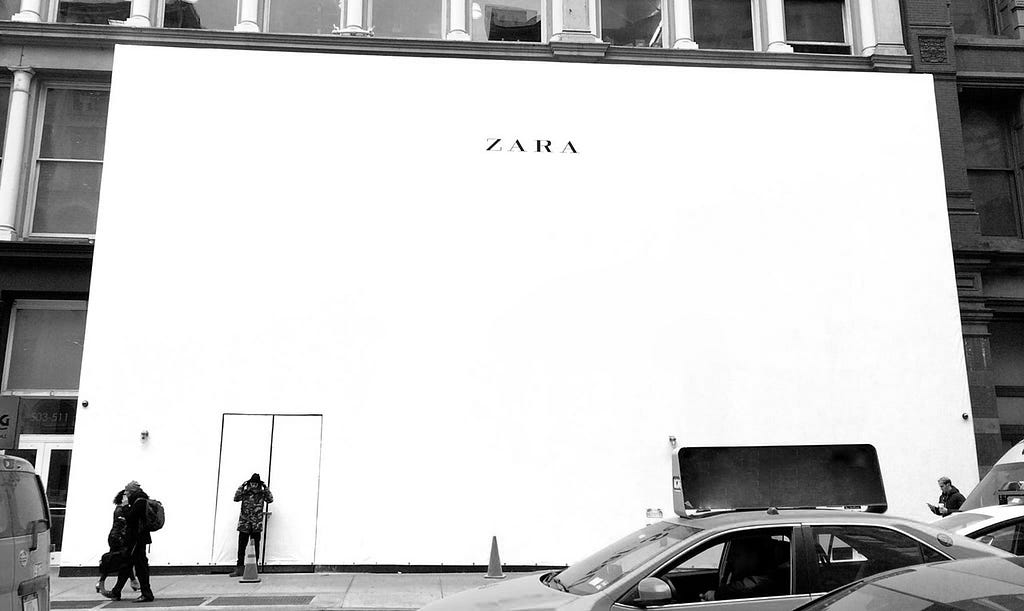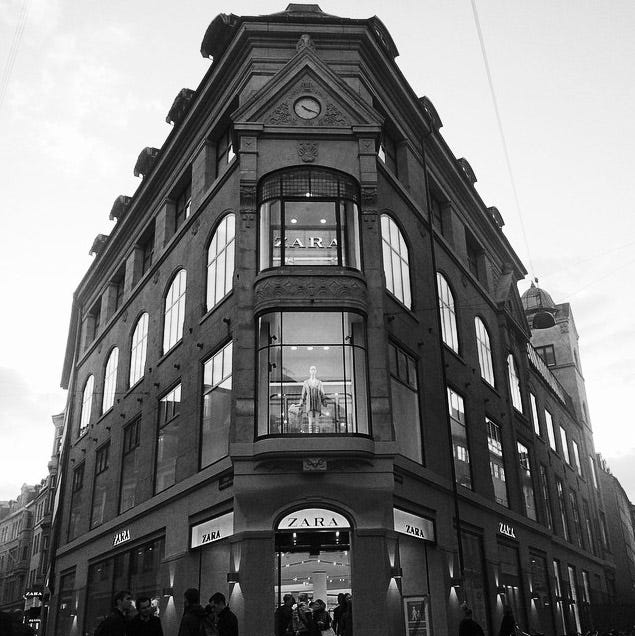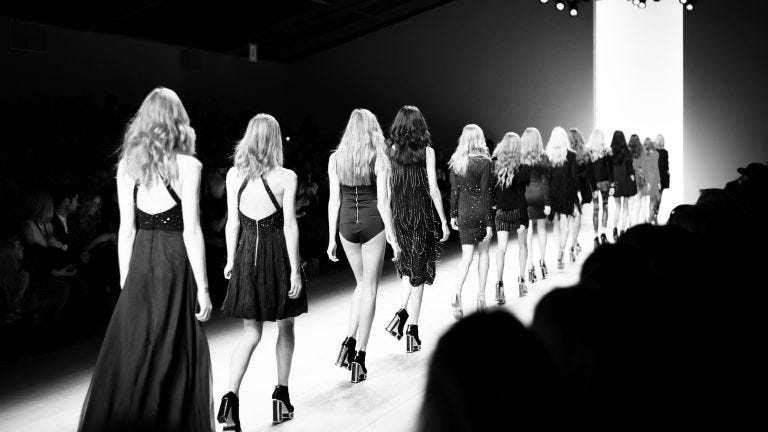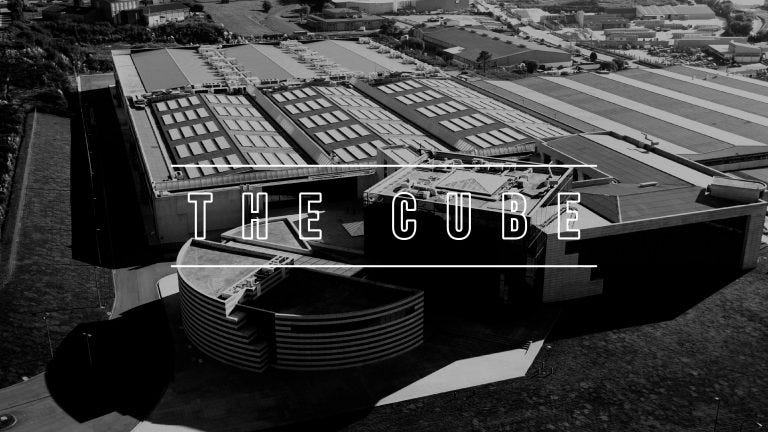
In September 2016, Microsoft founder Bill Gates slipped to #2 in Forbes’ annual list of the World’s Richest Billionaires. Gates’ premier position, which he had steadfastly maintained for many years, was usurped — if only for a few days — by an Amancio Ortega. In comparison to Gates’ public stature and celebrity, Ortega was a relative unknown and it took market watchers, entrepreneurs and business journalists a few incredulous Google searches to discover that the 80-year-old Spaniard was actually the founder of clothing giant Zara.
On closer inspection though, it seems hardly surprising that a figure as unknown and low-key as Ortega helms one of the world’s largest fashion empires. For one, Zara, in keeping with Ortega’s reluctance to do interviews or court any kind of publicity, invests little to no money in advertising. Unlike competing brands and fashion houses, Zara scarcely appears on billboards; its collections do not figure in fashion shows; neither does it lobby for Vogue’s gilded pages, nor does it associate itself with any celebrities or high-profile fashion designers.
Indeed, it bends all the rules and defies all the conventions that have endured since the time fashion, as it were, emerged from the aristocratic salons and bohemian boutiques of 19th Century Paris, and entered the mass market. And yet, Zara is thriving. With over 2,100 stores across the world and a revenue of $15.9 Billion (2016), it is one of the most valuable companies in the world.
Unlike competing brands and fashion houses, Zara scarcely appears on billboards; its collections do not figure in fashion shows; neither does it lobby for Vogue’s gilded pages, nor does it associate itself with any celebrities or high-profile fashion designers.

So how does Zara do it?
The answer is Fast Fashion. Fast Fashion, pioneered by Zara, is both the dynamo of its success and its most distinguishing factor. In contradistinction, legacy fashion brands, whose products are priced higher, follow the more orthodox and time-honored approach of Seasonal Fashion, wherein the bulk of their inventory is designed and manufactured before the beginning of every season, allowing no room for design improvements or changes mid-season.
Before proceeding, let’s strike a clear distinction between Fast Fashion and Seasonal Fashion clothing. While most apparel brands reserve 80% of their inventory towards Seasonal Fashion clothing, Zara does the opposite, reserving only 50% for its seasonal line and devoting the rest to Fast Fashion items. From hereon, all facts, figures and details will relate to Zara’s Fast Fashion clothing and not the other 50% of its inventory.
What is Fast Fashion?
Since it came en vogue, Fast Fashion has been adopted by several other brands — H&M, notably, commits up to 20% of its inventory towards Fast Fashion items — with the result that the concept has become elastic and loosely defined. We’ve, however, tried to delineate it by examining its core features.

Frugal
Zara’s approach to Fast Fashion can be traced to Ortega’s earliest business venture in 1963 — when he sold quilted bathrobes and lingerie that were inspired from designer brands. To this day, Zara stays true to Ortega’s thrifty design processes. Compared to its competitors, the company does not hire high-profile designers or invest too heavily in crafting wholly original designs. In contrast, its designers, young, anonymous and enthusiastic, work in concert to create and modify designs with strict adherence to market demands.
Imitative
Zara’s genius lies in identifying the latest fashion fads; it keeps an army of fashion watchers who keep an eye on what’s trending on runways, what couture brands are producing and what avant-garde designers are exhibiting, and accordingly tailoring its fabrics to stay on top of trends. In doing so, Zara has run afoul of the storied gatekeepers of fashion as well as indie designers. In 2012, luxury brand Christian Louboutin took legal action against Zara for allegedly imitating one of its shoe designs and selling it at half the price. Although the case was dismissed, fashion journalists surmised that Zara manages to steer clear of trouble by tweaking its designs just enough to avoid copyright violations. Similarly, young and emerging designers have railed against Zara for selling alleged knockoffs of their work.
Zara’s genius lies in identifying the latest fashion fads; it keeps an army of fashion watchers who keep an eye on what’s trending on runways, what couture brands are producing and what avant-garde designers are exhibiting, and accordingly tailoring its fabrics to stay on top of trends.

Responsive
If you had been shopping for jeans at any of Zara’s outlets in New York City in the later months of 2001, chances are that you purchased a pair that was black in color. This isn’t mere coincidence; instead, it is a part of Fast Fashion’s core strategy. A few days after the September 11 attacks rocked NYC, Zara’s store managers realized that the bulk of their customers were in a sullen mood. The observation was relayed to Zara’s designers, who quickly swung into motion. Only a few weeks later, Zara rolled out a new collection that was entirely in black.
In fashion parlance, turnaround time represents the time it takes for a current collection to be replaced by a new one. For most fashion retailers, the turnaround time is 3–6 months. In comparison, Zara, as it demonstrated in the aftermath of September 11, can push a collection from the canvas to the store shelf in two weeks.
What Makes Fast Fashion So Fast

The Cube is where Zara’s 200-member design team, its procurement and production teams work in coordination. Tokyo, Mumbai, Rio de Janeiro or London — no matter where you shop, at least 50% of every Zara outlet’s inventory (in other words, its Fast Fashion inventory) begins its course at The Cube.
Arteixo is a quiet town located in A Coruña, on the Spanish coastline. With its Galician architecture and historical landmarks, it seems hardly indistinct from the dozens of heritage towns dotting the Spanish countryside. Under its cobbled streets, though, runs a 124-mile-long network of high-speed monorail tracks that converge under a colossal and forbidding megastructure called The Cube. Given its enormity and futuristic design, The Cube seems like something out of the sets of 2001 A Space Odyssey. It is, in actuality, the nerve centre of Zara’s worldwide operations.
The Cube is where Zara’s 200-member design team, its procurement and production teams work in coordination. Tokyo, Mumbai, Rio de Janeiro or London — no matter where you shop, at least 50% of every Zara outlet’s inventory (in other words, its Fast Fashion inventory) begins its course at The Cube.
Read The Rest Here
How Zara Spent $0 In Advertising To Disrupt The Fashion Industry was originally published in The Startup on Medium, where people are continuing the conversation by highlighting and responding to this story.
from The Startup – Medium https://medium.com/swlh/how-zara-spent-0-in-advertising-to-disrupt-the-fashion-industry-59526b5000af?source=rss—-f5af2b715248—4
